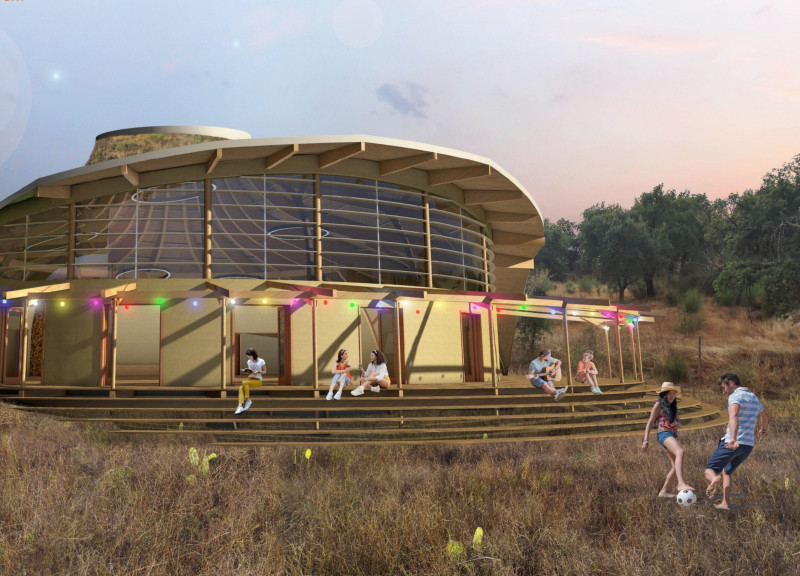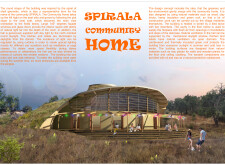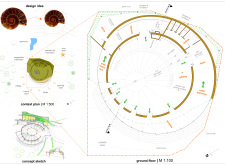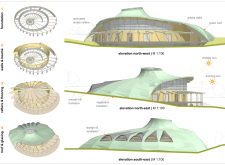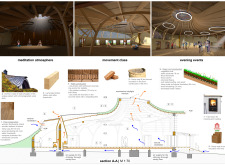5 key facts about this project
At its core, the project represents a dedication to sustainability and user engagement. Its design not only meets functional demands but also fosters connections among users and the larger community. By incorporating open spaces and communal areas, the architecture encourages interaction, making it more than just a physical structure. The consideration of human experience within the layout significantly enhances the project’s purpose, implying that architecture can serve as a catalyst for social engagement.
The façade of the building serves as a prominent feature, showcasing a balance of transparency and solidity. Large expanses of glass provide visual access to the interior while also facilitating natural light, creating an inviting atmosphere. This design choice highlights the importance of connection to the outside world, blurring the boundaries between interior and exterior. The careful selection of materials, such as concrete for durability, steel for structural integrity, and wood for warmth, reflects a commitment to quality and sustainability. Each element plays a role in not only supporting the structure but also contributing to its overall aesthetic appeal.
The spatial organization within the project has been meticulously planned. Public and private functions are clearly delineated yet maintain a fluidity that allows for ease of movement and interaction. Each space serves a specific purpose, from collaborative work areas to quiet corners for reflection, ensuring that various user needs are met. The integration of flexible spaces affords adaptability, allowing the architecture to respond to changing requirements over time.
Sustainability is a central theme woven throughout the design. The project employs several eco-friendly strategies, including energy-efficient systems and the use of local materials, which minimizes its environmental footprint. Features such as green roofs not only enhance insulation but also promote biodiversity, allowing the architecture to contribute positively to the local ecosystem. This attention to sustainable practices exemplifies a forward-thinking approach that prioritizes both environmental stewardship and user well-being.
Unique design approaches are evident throughout the project, particularly in its engagement with the local culture and landscape. The architectural language reflects regional characteristics, ensuring that the design resonates with the community it serves. The implementation of landscaping that incorporates native plant species further roots the project in its context, promoting biodiversity and creating a serene environment that complements the built form.
In summary, this architectural design project stands as an embodiment of thoughtful planning, innovative solutions, and community focus. Its blend of functionality and aesthetic beauty reaffirms the role of architecture as a medium for enhancing human interaction and promoting sustainability. To explore the architectural plans, sections, and concepts in greater detail, readers are encouraged to engage further with the project presentation, where a wealth of insights awaits.


